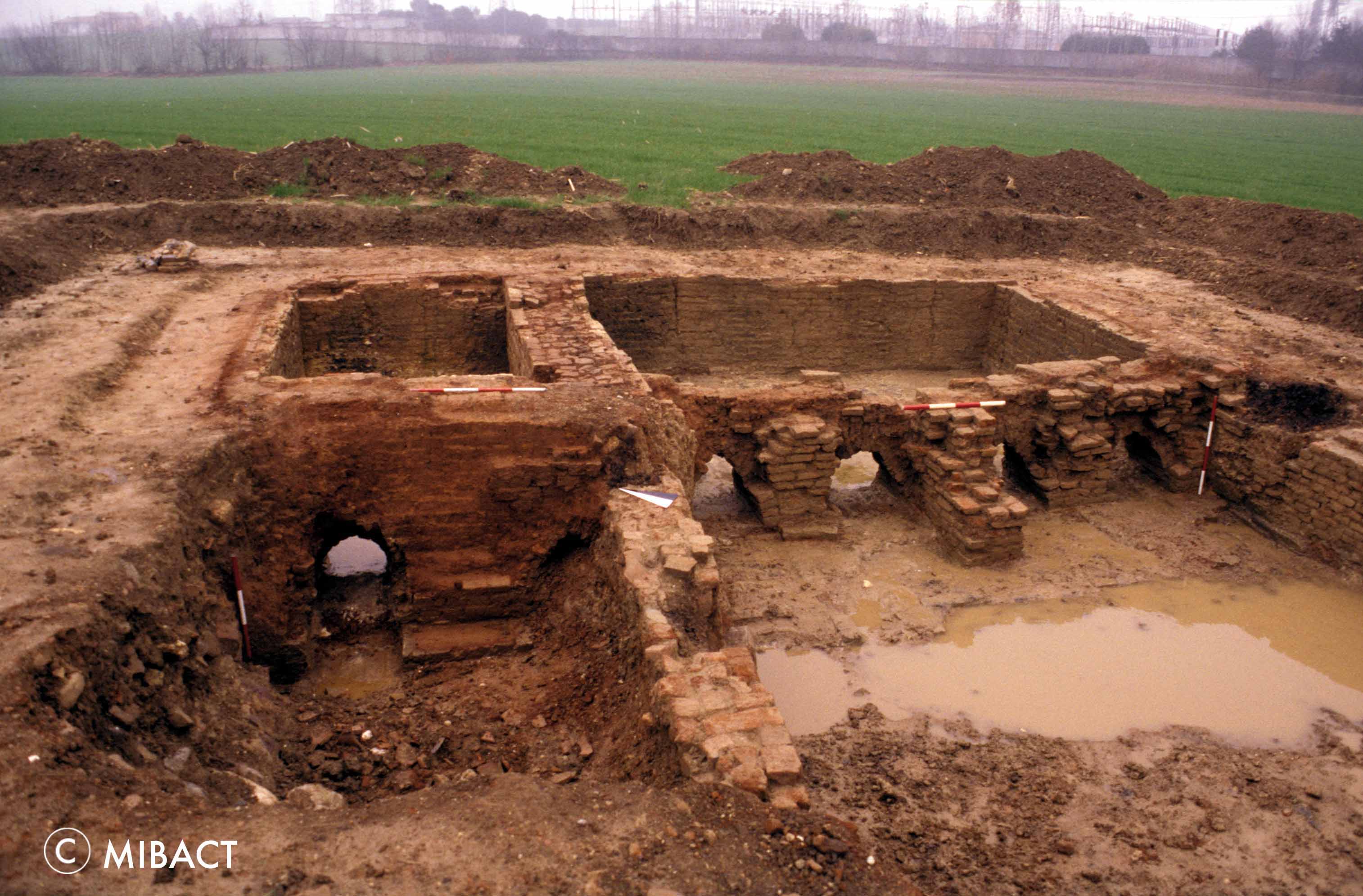La Fornace del XIV secolo
La denominazione “Fornaci dei Gorghi” che identifica l’area di ritrovamento indica il perpetrarsi della vocazione artigianale dell’area anche in tempi più recenti.
Poco ad ovest del complesso romano, nel 2002, sono state individuate due fornaci affiancate.
La fornace più grande, con un’ampia camera di cottura di forma rettangolare e dotata di quattro imboccature, sembra essere stata utilizzata esclusivamente per produrre laterizi.
La fornace più piccola, che reimpiegava in gran parte una struttura precedente ed era anch’essa a pianta rettangolare, potrebbe invece essere stata adoperata per ottenere calce viva dalla cottura di calcari dolomitici, come risulta dalle analisi di campioni dei residui prelevati al suo interno.
Una cronologia generica dell’impianto artigianale è suggerita da materiali ceramici, databili tra XIII e XIV secolo, rinvenuti nell’area.
The area where the Roman kilns were discovered significantly still holds the name “Fornace dei Gorghi” or “Gorghi Kiln”, in which the term “gorghi” might be translated from Italian as “watercourses” and therefore refer to the nearby canal and ditches that still exist there.
A confirmation that the area was dedicated to this kind of activity over a very large time span is to be found slightly to the west of the Roman brickyard, where an archaeological excavation in 2002 brought to light the lower sections of two medieval structures of differing dimensions, built side by side and against the remains of an earlier artisanal building.
The larger of the two kilns, with its large rectangular firing chamber and four apertures, was built ex-novo, and judging by its dimensions and the sole presence of tile finds during the excavations, appears to have been used exclusively for tile production. The smaller kiln, which was largely superimposed on the earlier building and was also rectangular in shape, may perhaps have been used for the production of quicklime through burning Dolomite limestone, as the analysis of samples taken from within the structure seem to suggest.
Usually lime kilns were circular vats, dug into the ground or within earthworks, as demonstrated by many notable examples; the kiln at Lonato therefore represents an anomaly. A general chronology of the site is indicated by pottery fragments, datable to a period between the 13th and 14th centuries, that were found in the area. The use of kilns for the production of bricks, tile and quicklime at Lonato during the 15th century is clearly documented in local council statutes, that reliably cite specific names of those involved in production.

La fornace del XIV secolo - (© Mibact - Soprintendenza per i Beni Archeologici della Lombardia)

